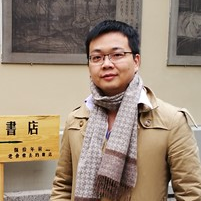Recent Advances in Computer Vision Technology and Its Agricultural Application
A special issue of Machines (ISSN 2075-1702). This special issue belongs to the section "Robotics, Mechatronics and Intelligent Machines".
Deadline for manuscript submissions: closed (30 September 2022) | Viewed by 27915
Special Issue Editors
Interests: agricultural machinery design; agricultural automation
Special Issues, Collections and Topics in MDPI journals
Interests: sensors; smart agriculture; agricultural robotics; computer vision
Special Issues, Collections and Topics in MDPI journals
Interests: bionic robotics; computer vision; precision agriculture
Interests: computer vision; field robotics; frp composites; recycled concrete; mechanical performance of steel structures; computer vision; 3d reconstruction
Special Issues, Collections and Topics in MDPI journals
Special Issue Information
Dear Colleagues,
Computer vision is a technological application that can detect, locate, or track objects. It has been extensively studied in industrial and precision agriculture fields, particularly in regard to autonomous driving, surface defect detection, object detection and localization, automatic harvesting robotics, plant phenotyping, and crop yield estimation.
Autonomous driving allows a motor vehicle to sense its environment and operate without human involvement. Uncertainties on the road, such as illumination changes and occlusion, make autonomous driving highly challenging; pedestrian detection and lane line detection, for example, are difficult to achieve.
Surface defect detection can distinguish desired features from anomalies. It is an important technology in terms of production automation. Surface defect detection requires an algorithm to detect and analyze defects quickly and robustly, which is highly challenging.
Deep learning techniques can facilitate object detection and localization, but deep learning algorithms require burdensome computational processes and large amounts of storage, which pose a significant challenge in their implementation. A mobile and fast deep learning algorithm is preferred.
Automatic fruit/vegetable harvesting robots have been researched for several decades, but there is still no such commercial product available. Existing harvesting robots struggle with target fruit/vegetable detection and localization, obstacle detection and localization, collision-free path planning, vision-based servo control, and other problems.
The “plant phenotype” refers to all the measurable features of a plant (e.g., leaf color and shape). The phenotype describes the relationship between the genotype and environment on a plant’s measurable characteristics. Measuring plant phenotypes via computer vision is a notable potential research direction as it may allow for the accurate detection and segmentation of plant parts as well as the accurate reconstruction of plant parts.
This research topic relates to several computer vision applications in industrial and agricultural fields, mainly autonomous driving, surface defect detection, object detection and localization, automatic harvesting robotics, plant phenotyping, and crop yield estimation.
Topics of interest include (but are not limited to):
- Computer vision-based autonomous driving algorithms that can robustly detect pedestrians, lane lines, and other targets.
- Generalizable, real-time surface defect detection methods.
- End-to-end, real-time, deep neural networks that can detect and locate objects simultaneously.
- Fruit/vegetable detection and localization for automatic harvesting robots, specifically end-to-end, real-time, and precise deep neural networks that can detect target produce in fields.
- Generalizable methods for segmenting or reconstructing plant parts to support plant phenotyping processes.
- Crop yield estimation.
We look forward to receiving your contributions.
Dr. Xiangjun Zou
Dr. Hao Gan
Dr. Zhiguo Li
Dr. Yunchao Tang
Guest Editors
Manuscript Submission Information
Manuscripts should be submitted online at www.mdpi.com by registering and logging in to this website. Once you are registered, click here to go to the submission form. Manuscripts can be submitted until the deadline. All submissions that pass pre-check are peer-reviewed. Accepted papers will be published continuously in the journal (as soon as accepted) and will be listed together on the special issue website. Research articles, review articles as well as short communications are invited. For planned papers, a title and short abstract (about 100 words) can be sent to the Editorial Office for announcement on this website.
Submitted manuscripts should not have been published previously, nor be under consideration for publication elsewhere (except conference proceedings papers). All manuscripts are thoroughly refereed through a single-blind peer-review process. A guide for authors and other relevant information for submission of manuscripts is available on the Instructions for Authors page. Machines is an international peer-reviewed open access monthly journal published by MDPI.
Please visit the Instructions for Authors page before submitting a manuscript. The Article Processing Charge (APC) for publication in this open access journal is 2400 CHF (Swiss Francs). Submitted papers should be well formatted and use good English. Authors may use MDPI's English editing service prior to publication or during author revisions.
Keywords
- precision agriculture
- computer vision
- autonomous driving
- surface defect detection
- harvesting robot
- crop yield estimation








